Manitoulin Island:Land of Legends
Manitoulin is a place that, while it’s north, isn’t quite in Northern Ontario, so it’s not too far from your home.
Manitoulin has always been a sort of middle earth: neither north nor south; the sort of place where dreams and legends abound.
On Manitoulin, you can relax and dream of the past or the future.
And, long before European settlement of the largest freshwater island in the world, the original people told legends of how each place came to be.
Here is a sampling of Manitoulin lore:
Manitoulin is a place where legends live on. Wherever you go on this vast and beautiful island, you can feel the mystical aura of the place and its people. Visit Manitoulin’s communities and you’ll always be drawn back for more.
Every place has a story to tell, it’s just up to you to discover it. To start off, here are the original meanings of some of the village names of the Island. No doubt you’ll agree it is a shame some of these beautiful, lilting Ojibwe names were Anglicized.
Manitoulin is a place where legends live on. Wherever you go on this vast and beautiful island, you can feel the mystical aura of the place and its people. Visit Manitoulin’s communities and you’ll always be drawn back for more.
To begin, the name Manitoulin has sort of a legend of its own. The Ojibwe and Odawa people saw Manitoulin as the home of the Great Spirit. They believe that nature and its forces are represented in the spirit world by “manitous”. Superior to all the other manitous is the Great Spirit, known around these parts as Gitchi Manitou. And because of the Gitchi Manitou’s greatness it was only fitting that this spirit would live separate and apart from all other spirits.
No other place seemed quite as appropriate to serve as the home of Gitchi Manitou than a great island lying in the north end of Lake Huron. So the Gitchi Manitou has made the world’s largest freshwater island its home ever since, lending part of its name to address its home…the Manitoulin Island.
Translated literally the name “Manitoulin” means God’s Island, and a lot of tourists and locals alike would agree with that assessment.
The Ojibwe name Manitowaning can be translated to mean “den of the Great Spirit”, the home base of the Gitchi Manitou. Another legend has it that the Great Spirit makes use of a secret underground cave linking South Bay and Manitowaning Bay, to travel from one to the other.
Sagidawong means simply, the outlet in English. This little island village blossoms during the summer months when thousands of tourists flock to Manitoulin via the island’s southern link to the mainland, the Chi-Cheemaun ferry. Sagidawong has been replaced with the much more easily pronounced, if not hum-drum name of South Baymouth.
Translated literally the name “Manitoulin” means God’s Island, and a lot of tourists and locals alike would agree with that assessment.
“Home of the stork”, “place of the grindstone”, and “bay of grey slate” are all translations for the name Sheguiandah. Sheguiandah actually refers to two communities; Sheguiandah First Nation and the tiny village of Sheguiandah. Evidence of human habitation, probably attracted by the excellent quality of the silica deposit at this location dates back well over 9,000 years making it one of the oldest sites of prehistoric civilization in North America.
Further north is Manitoulin’s largest metropolis, a town of 1500. Waiebijiwang literally means “where the waters flow” in the Ojibwe language. Early French voyagers must have had the same idea when they christened the settlement “Le Petit Courant”. On early maps the community was labeled Shaftsbury.
Metchiging, meaning “place of the fish harpoon”, had taken on the somewhat less romantic name of West Bay but has since reclaimed its name as M’Chigeeng. The geographic centre of Manitoulin, M’Chigeeng is home to Manitoulin Secondary School, the island’s high school. Over the years artistic talent in the community has flourished, led, in part, by the efforts of the Ojibwe Cultural Foundation.
The next step on Highway 540 is a place that has retained its Ojibwe name, Kagawong, home of the beautiful Bridal Veil Falls. It translates to mean, “where mists rise from the falling water”.
Gore Bay, a town of 800, was given the Indian name of Pushkwdinong. Translating to mean “the barren hill”, the name is no longer appropriate as Gore Bay is a noted place of beauty on the Island.
Not forgetting the largest unceded Indian reserve in North America, Wikwemikong, with a population of over 3000 means “bay of the beaver”.
Tehkummah, is instantly recognizable as the name of a great chief, Louis Tekoma. The name means “rays of light flashing in the sky”…probably referring to lightning.
Its west end counterpart, a small reserve called Sheshegwaning, has an unsettling name that means “place of the rattle snakes”. The name is more than a little misleading considering the Mississauga rattler is no longer found there.
The beautiful little hamlet of Providence Bay, home of the legend of the burning boat, and the sailer’s grave, has an Ojibwe name, Bebikodawangog, that aptly means, “where sand curves around the water”. Providence Bay boasts the largest sand beach on the Island.
Spring Bay, a close neighbour to Providence Bay, means “cold water” in its Ojibwe name, Takibiwikwet.
Not to be left out, Mindemoya has a name that serves as a legend in its own right. Mindemoya translate to mean “the old woman”, and refers to a legend regarding the island in Lake Mindemoya.
Tehkummah, is instantly recognizable as the name of a great chief, Louis Tekoma. The name means “rays of light flashing in the sky”…probably referring to lightning.
There are countless other magical places on this Island with long forgotten, enchanting names. Give it a whirl and see what other legends you can discover.
